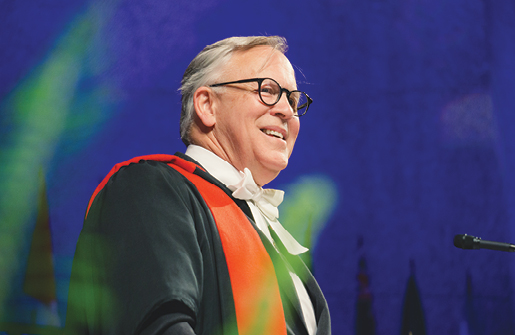I hope this old train breaks down
so I could take a walk around.
See what there is to see. . . .
Because it’s gonna sting me when I leave this town
And all the people in the street
that I’ll never get to meet . . .
—Jack Johnson, “Breakdown”
Why would anyone want to be forced to stop and walk when they can ride through town on a train easily and quickly—can’t one see what there is to see from a train? Yet by the end of Johnson’s song, his refrain shifts. As he repeats, “I need this old train to break down—oh please just let me please break down,” by then, we know just what he means.
A few months ago we were living in a world that moved fast as a bullet train and many of us harbored nostalgia for slower, easy days. Careful what you long for. We have since been forced by COVID-19 to slow down (in some ways) and the object of our longing has shifted. We yearn for places and people in them. We yearn for health. We yearn for touch, for gathering, for the presence of voices raised in worship. The windows we look through are not of train cars but of our homes. The streets we long to walk, to meet our neighbors and friends and families, are right outside. It’s clear now to everyone what was clear to the songwriter: it’s “people in the streets” who make us feel the sting of separation.
This hints at what makes neutral “spaces’’ into “places” capable of activating yearning when they are inaccessible—and it’s one of many perspectives that are considered in this issue’s theology section on “Place,” curated by guest editor and Associate Professor of Urban Mission Jude Tiersma Watson. Interspersed among articles and sidebars gathered before COVID-19 is a series of illustrations imagined during the quarantine. The illustrations are meant to portray the idea that sacred interaction often transforms even impossible spaces—inspired in part by Walter Brueggemann’s observation that what turns “space” into “place” is story (p. 57). The connections we forge together and with God are so core to us in the places we inhabit that even the most unlikely of contexts can become vessels for the sacred—small as a leaf, distant as the moon, random as an abandoned golf course, disruptive as a storm at sea. We have seen it ourselves in recent days: homes become churches, dining rooms become offices, and sacred places of prayer can be discovered everywhere.
This issue is not about the coronavirus, so we took care not to say too much. On the other hand, having the first-ever-not-in-print issue (see our note on the back cover) feature “place” without mentioning the quarantine seemed an oversight. This is the issue that would have been given out at Commencement 2020, and even though that group of graduates would represent only a fraction of our 22,000 subscribers, they are the dearest of all readers. Because we have had to postpone an in-person commencement ceremony, we’ve included our graduates’ names as a small acknowledgement of their remarkable achievements.+ In addition, we have a special scavenger hunt for them: when you see small graduation caps scattered through the issue, click on them to view short videos of encouragement from the Fuller community to our newly minted alumni.
Finally, this is more than just a PDF of our normal magazine as we’ve tried to bring this digital version alive in some new ways. It represents our editorial hope to connect with you this season, in the belief that something holy can be created—a place where we can meet.

Lauralee Farrer is chief storyteller and vice president of communications.
I hope this old train breaks down
so I could take a walk around.
See what there is to see. . . .
Because it’s gonna sting me when I leave this town
And all the people in the street
that I’ll never get to meet . . .
—Jack Johnson, “Breakdown”
Why would anyone want to be forced to stop and walk when they can ride through town on a train easily and quickly—can’t one see what there is to see from a train? Yet by the end of Johnson’s song, his refrain shifts. As he repeats, “I need this old train to break down—oh please just let me please break down,” by then, we know just what he means.
A few months ago we were living in a world that moved fast as a bullet train and many of us harbored nostalgia for slower, easy days. Careful what you long for. We have since been forced by COVID-19 to slow down (in some ways) and the object of our longing has shifted. We yearn for places and people in them. We yearn for health. We yearn for touch, for gathering, for the presence of voices raised in worship. The windows we look through are not of train cars but of our homes. The streets we long to walk, to meet our neighbors and friends and families, are right outside. It’s clear now to everyone what was clear to the songwriter: it’s “people in the streets” who make us feel the sting of separation.
This hints at what makes neutral “spaces’’ into “places” capable of activating yearning when they are inaccessible—and it’s one of many perspectives that are considered in this issue’s theology section on “Place,” curated by guest editor and Associate Professor of Urban Mission Jude Tiersma Watson. Interspersed among articles and sidebars gathered before COVID-19 is a series of illustrations imagined during the quarantine. The illustrations are meant to portray the idea that sacred interaction often transforms even impossible spaces—inspired in part by Walter Brueggemann’s observation that what turns “space” into “place” is story (p. 57). The connections we forge together and with God are so core to us in the places we inhabit that even the most unlikely of contexts can become vessels for the sacred—small as a leaf, distant as the moon, random as an abandoned golf course, disruptive as a storm at sea. We have seen it ourselves in recent days: homes become churches, dining rooms become offices, and sacred places of prayer can be discovered everywhere.
This issue is not about the coronavirus, so we took care not to say too much. On the other hand, having the first-ever-not-in-print issue (see our note on the back cover) feature “place” without mentioning the quarantine seemed an oversight. This is the issue that would have been given out at Commencement 2020, and even though that group of graduates would represent only a fraction of our 22,000 subscribers, they are the dearest of all readers. Because we have had to postpone an in-person commencement ceremony, we’ve included our graduates’ names as a small acknowledgement of their remarkable achievements.+ In addition, we have a special scavenger hunt for them: when you see small graduation caps scattered through the issue, click on them to view short videos of encouragement from the Fuller community to our newly minted alumni.
Finally, this is more than just a PDF of our normal magazine as we’ve tried to bring this digital version alive in some new ways. It represents our editorial hope to connect with you this season, in the belief that something holy can be created—a place where we can meet.
Lauralee Farrer is chief storyteller and vice president of communications.
Mark Labberton offers thoughts on the idea of place.
